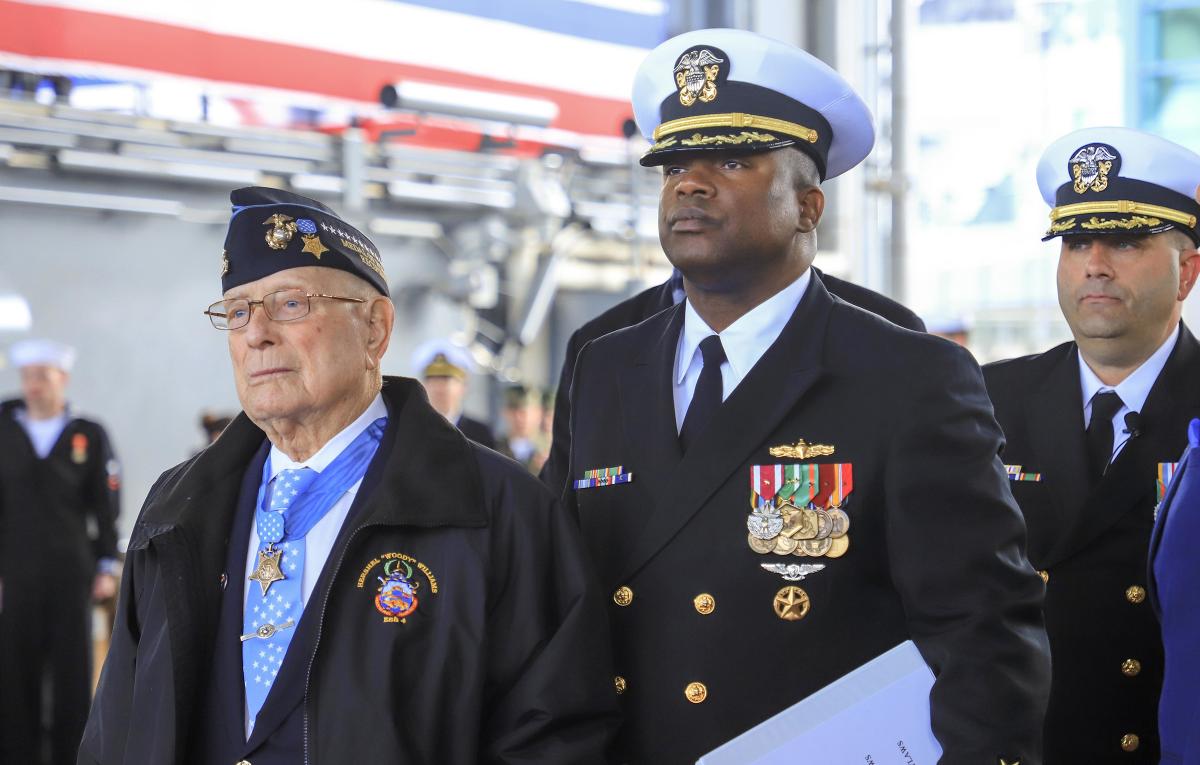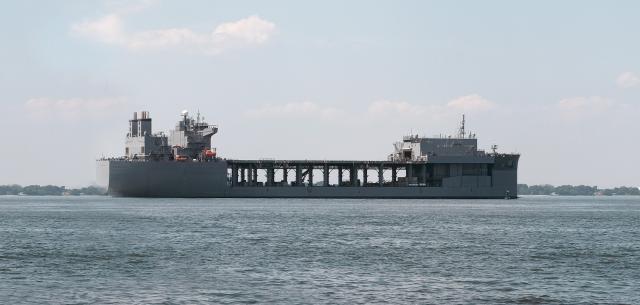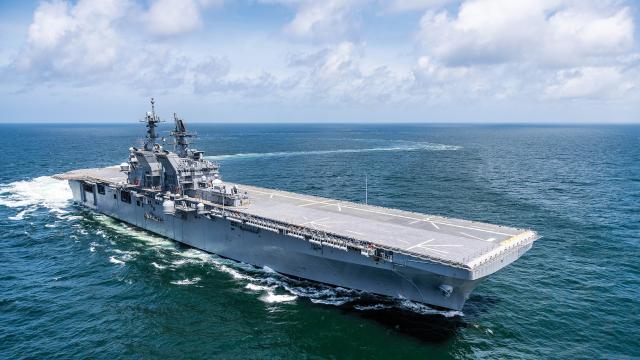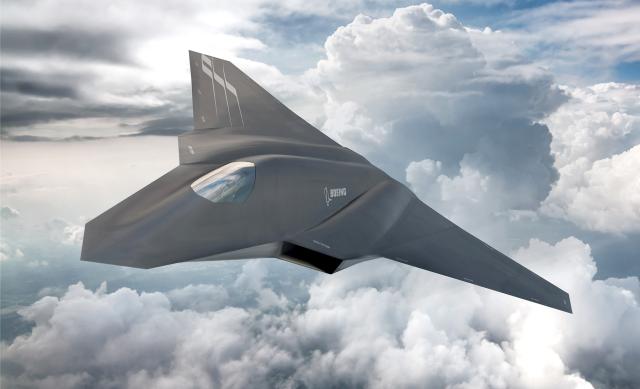The widespread transmission of the novel coronavirus and rules prohibiting large-scale gatherings have put a damper on public commissioning events for the Navy, but they have not stopped new ships from joining the fleet.
On 7 March, sailors manned and brought to life the USS Hershel “Woody” Williams (ESB-4). The expeditionary sea base is named for the last surviving Medal of Honor recipient from the battle of Iwo Jima. Chief Warrant Officer Hershel Williams was present for what almost certainly will be the last public commissioning of 2020. The ship’s sponsor was Susan Ford Bales, daughter of the late President (and U.S. Navy veteran) Gerald R. Ford.
Originally intended to be U.S. Naval Ship (USNS) expeditionary transfer docks operated by Military Sealift Command, the expeditionary sea bases were reclassified so they can be manned by all-military crews and employed as warships, executing missions forbidden under international law to vessels designated USNS. Built by General Dynamics’ National Steel and Shipbuilding division in San Diego, California, the Hershel “Woody” Williams sailed for her first deployment to support Africa Command in late July.
The USS Kansas City (LCS-22), an Independence-class littoral combat ship, joined the fleet administratively on 20 June. Built by Austal USA in Mobile, Alabama, she was sponsored by Tracy Davidson, wife of Admiral Phil Davidson, commander of Indo-Pacific Command. The LCS is the second ship to bear the name, after a replenishment oiler, USS Kansas City (AOR-3), served from 1970 to 1974. As with all Independence-class LCSs, she will be homeported at Naval Base San Diego.
The USS Tripoli (LHA-7) was commissioned administratively on 15 July. She is the second of the America-class amphibious assault ships and the last expected to be built without a well deck, to create greater aviation capacity. Her sponsor was Lynne Mabus, wife of former Secretary of the Navy Ray Mabus. The ship was built by Huntington Ingalls Industries in Pascagoula, Mississippi. She will be homeported in San Diego and is the third ship to bear the name of the Barbary state in North Africa where U.S. Marines and sailors fought in 1805 during the First Barbary War. A Casablanca-class escort carrier (CVE-64) and an Iwo Jima–class amphibious assault ship (LPH-10) also have borne the name.
—Brian O’Rourke
Coast Guard Maritime Surveillance Aircraft
The Coast Guard operates two types of medium-endurance, fixed-wing surveillance aircraft. Both aircraft integrate the Navy’s Minotaur mission system architecture.
The Airbus (EADS) HC-144B is a remanufactured HC-144A, with all-new glass-cockpit communication, navigation, and performance-monitoring systems. It is based on the Airbus CN-235-300 maritime patrol aircraft.
HC-27J Spartans were originally purchased by the U.S. Air Force, but 14 of them were transferred to the Coast Guard in 2014. The Spartan uses the same engines and similar avionics packages as the Lockheed Martin C-130J. Six aircraft operate from Air Station Sacramento in California. The others are at the HC-27J Asset Project Office, at Elizabeth City, North Carolina, which oversaw the Spartan’s missionization.
NextGen Air Dominance
One of naval aviation’s most pressing priorities is development of the joint Navy and Air Force Next Generation Air Dominance (NGAD) family of systems (the Navy calls it “N-jad,” while the Air Force pronounces it “N-gad”).
The program’s goal is a group of multiple systems designed to mitigate mid-to-long-term capability gaps. The Department of Defense has permitted each service to individually assess alternatives, but both were directed to share subsystem technologies and development costs, ensuring interoperability while delivering research and development efficiencies.
The Navy’s NGAD program remains classified, but some details have emerged, shedding light on how this program will be integrated with the fleet’s current and future architecture. Programmatically, NGAD is undergoing concept refinement, as planners map capabilities against a wide-ranging threat assessment, to ensure NGAD systems live up to their name and dominate the battlespace into the 2030s and beyond. The Navy wants to use it—in part—to provide advanced carrier-based power projection capabilities, addressing critiques that the carrier air wing’s range is too limited to be relevant in contested environments.
When concept refinement is complete, NGAD will proceed to the technology development phase. The Navy will develop specific platforms and hardware to produce a mesh-networked ability to make every platform a sensor, to share information easily between platforms and decision-makers, and to pair the ideal weapon or tool with the selected target for optimal effect.
A key component of NGAD will be the next-generation F/A-XX, which will replace the current F/A-18E/F Super Hornet fleet. The Navy is deliberating multiple paths for the F/A-XX program—greater aircraft speed and/or range and the possibility of optional manning—but solutions under consideration so far remain classified, outside of a few concept drawings. The Navy plans to end Super Hornet production in 2021 to make additional investments into NGAD in 2022 and beyond.
Given the Navy’s current budgetary challenges, the test for NGAD will be the move from aspiration to execution. However, one thing is clear from those directly associated with NGAD’s development: They are pleasantly surprised by the positive collaboration that exists between government and industry representatives—not always a given, as past programs have shown.
—Commander Guy M. Snodgrass, U.S. Navy (Ret.)






